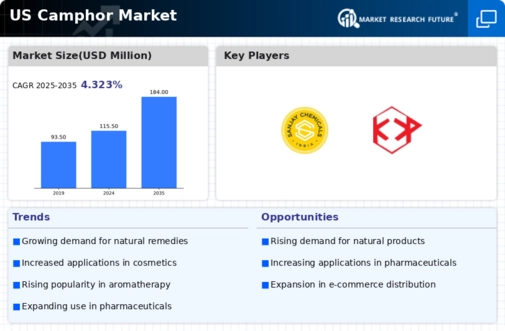The competitive landscape of the US Camphor Market presents a unique blend of opportunities and challenges driven by both local and international players. This market is characterized by the demand for camphor derived from both natural and synthetic sources, catering to various industries such as pharmaceuticals, cosmetics, and food flavoring.
As consumer preferences evolve towards environmentally friendly and sustainable products, companies in the sector are increasingly focusing on innovation and expanding their product portfolios to meet these demands. Competitive insights reveal that market players are engaging in strategic collaborations, product development, and marketing initiatives to strengthen their presence and capture significant market share in the rapidly changing landscape of the US Camphor Market.
Bannister Chemical stands out in the US Camphor Market with its established reputation for quality and consistency. The company has leveraged advanced manufacturing techniques and stringent quality control measures to enhance its product offerings, which include high-purity camphor used in various applications. Bannister Chemical has built a strong presence in this market through its dedication to customer satisfaction and its ability to meet regulatory requirements efficiently.
Moreover, the company emphasizes research and development efforts, enabling it to introduce innovative products tailored to specific market needs. This commitment to excellence and customer engagement enables Bannister Chemical to maintain a competitive edge in an evolving market landscape while fostering long-term relationships with its clients.
Gujarat Gasket Manufacturing also plays a significant role in the US Camphor Market, known for its diverse range of products and services. The company specializes in supplying camphor for industrial and commercial applications, providing high-quality solutions that align with customer requirements. With a robust distribution network and strategic partnerships, Gujarat Gasket Manufacturing has managed to establish a strong foothold in the US market.
The company’s strengths lie in its focus on product quality, customer service, and effective supply chain management. Additionally, continual investments in innovation and potential mergers and acquisitions have positioned Gujarat Gasket Manufacturing to enhance its capabilities and expand its market share in the US Camphor Market, ensuring it remains a key player in this competitive landscape.













Leave a Comment